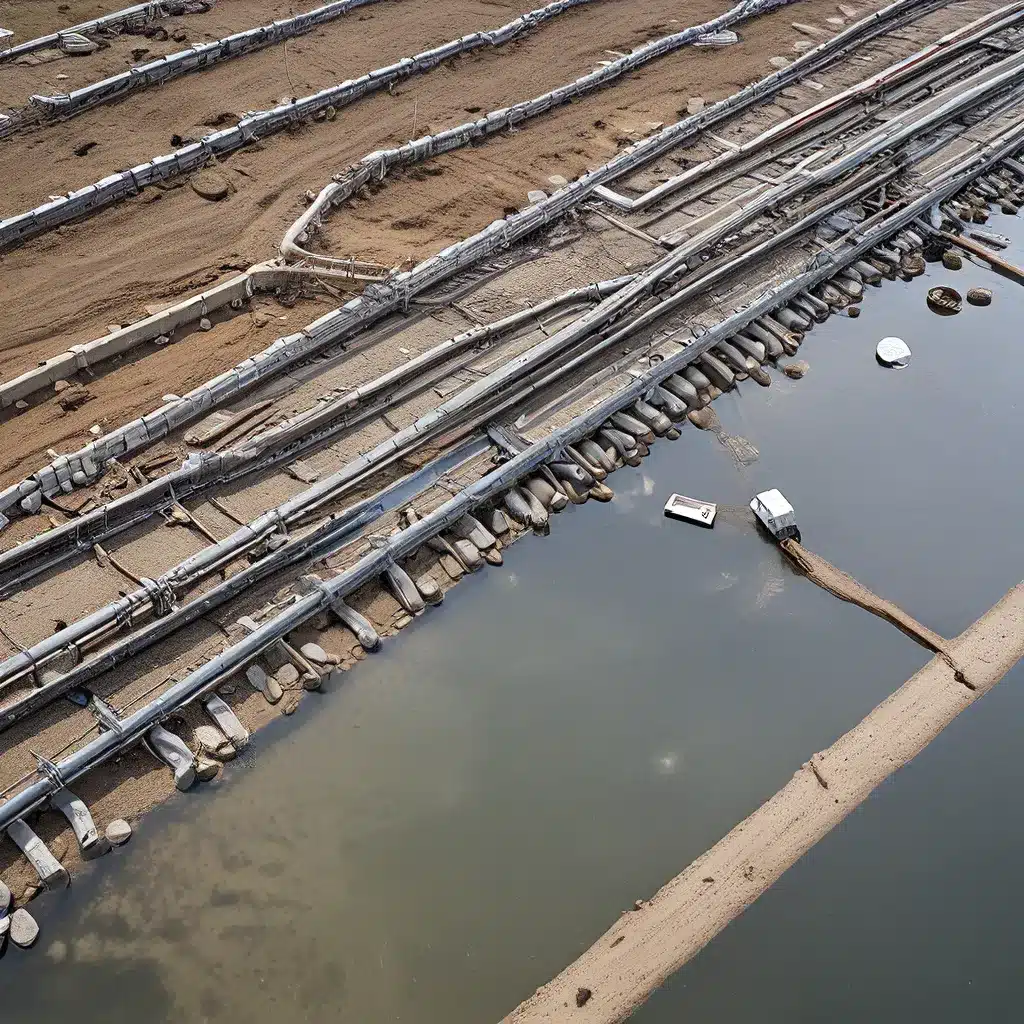
Diving into a Fluid Future
Our water infrastructure is in trouble. From crumbling dams and leaky pipes to chemical contamination and pathogen outbreaks, the backbone of our water systems is straining under the weight of aging facilities, competing demands, and an ever-changing climate. It’s a sobering reality that demands our collective attention and action.
As I dove deeper into this issue, I couldn’t help but feel a sense of unease. After all, water is the lifeblood of our communities – essential for manufacturing, agriculture, public health, and the environment. Yet, across the country, our water systems are in a state of disrepair, unable to keep up with evolving needs.
But this isn’t just a problem for tomorrow – the effects are already being felt today. Flooding, drought, and pollution are becoming more frequent and severe, straining the capacity of our outdated infrastructure. And as climate change continues to exacerbate these challenges, the need for a rethinking of our water systems has never been more urgent.
Confronting the Cracks in the System
As I dove deeper into the issue, I was struck by the sheer scale and complexity of the problem. Our water infrastructure is a vast and interconnected web of dams, levees, pipes, and treatment plants – each component critical to the delicate balance of supply and demand.
The numbers paint a sobering picture: the American Society of Civil Engineers estimates that the U.S. needs to invest over $1 trillion in water infrastructure improvements over the next 25 years just to maintain current service levels. And that’s not to mention the additional funding required to address the growing threats of climate change.
But the challenges go beyond just money. Competing interests and entrenched bureaucracies have long hindered efforts to enact meaningful reform. From federal agencies and local municipalities to private industry and environmental advocates, everyone has a stake in the future of our water systems – and not always aligned.
Rethinking the Equation
Despite the daunting challenges, I couldn’t help but feel a sense of optimism. After all, Inland Waters Inc. and other industry leaders have been at the forefront of innovative solutions, leveraging cutting-edge technologies and forward-thinking strategies to future-proof our water infrastructure.
One promising approach is the embrace of decentralized systems. Rather than relying on centralized, one-size-fits-all solutions, this model empowers communities to develop customized water management plans tailored to their unique needs and resources. By harnessing distributed technologies like water reuse, desalination, and stormwater harvesting, we can build resilience and adaptability into our water systems.
Another key focus is the integration of natural infrastructure. By incorporating elements like wetlands, floodplains, and urban forests, we can harness the power of nature to filter water, mitigate floods, and recharge aquifers. This “green infrastructure” not only enhances the performance of our traditional “gray” infrastructure, but also provides valuable ecosystem services and recreational benefits.
Forging Partnerships for a Fluid Future
As I explored the various strategies and technologies, I couldn’t help but be struck by the importance of collaboration. Solving the water infrastructure crisis will require a coordinated effort across all sectors – government, industry, academia, and the community.
The Rethinking Water Conference, for example, brings together a diverse array of stakeholders to foster action-oriented discussions and develop tangible solutions. By tapping into the collective knowledge and expertise of federal agencies, private companies, research institutions, and nonprofit organizations, this forum is helping to chart a course for a more resilient and equitable water future.
And the results are already starting to show. The recent passage of the Bipartisan Infrastructure Law, which allocates $50 billion to upgrading America’s water systems, is a clear sign that policymakers are recognizing the urgent need for investment. But this is just the beginning – sustained collaboration and a long-term commitment to innovation will be essential to truly rethinking our water infrastructure.
Diving into the Unknown
As I reflect on my journey through the complex and ever-evolving world of water infrastructure, I can’t help but feel a sense of both trepidation and excitement. The challenges we face are daunting, to be sure, but the potential for transformative change is equally inspiring.
It’s clear that we can no longer afford to take our water systems for granted. The time has come to rethink, reimagine, and reinvest in the critical infrastructure that sustains our communities and our planet. And with the right blend of bold vision, collaborative spirit, and technological innovation, I believe we can create a future where water is not a source of anxiety, but a wellspring of opportunity.
So, let’s dive in – together. The path ahead may be uncertain, but the stakes have never been higher. It’s time to chart a new course for our water infrastructure, one that can adapt to the changing demands and climates of the 21st century and beyond.



